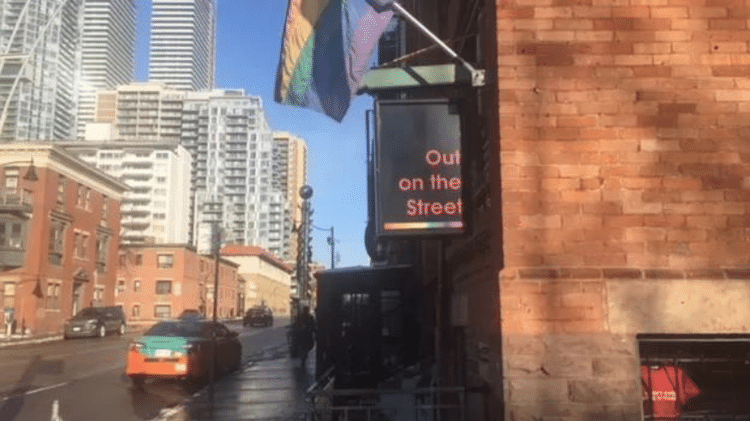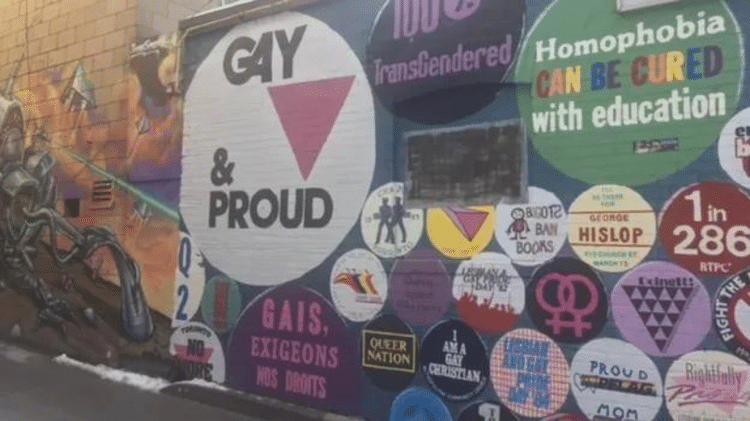Bruce McArthur was a gardener who also worked as Santa at a mall in Canada.
Despite serving several times in the police and serving probation after a violent incident years ago, McArthur managed to avoid arrest for a time.
When he was arrested, he had killed eight people between 2010 and 2017.
The 67-year-old man was found guilty of eight murders.
Many of his victims had a connection to Toronto’s gay neighborhood Village. Almost all of them were of Middle Eastern or South Asian descent.
However, since McArthur pleaded guilty in court, much of the evidence in the case was not presented to the court.
BBC reporter Mobeen Azhar traveled to Toronto to find out how Bruce McArthur killed eight people in seven years before he was discovered.
escaped victim
One person lucky enough to escape McArthur was Sean Cribbin, who met him in July 2017.
They exchanged messages online on a dating app where McArthur’s username was “Silver Fox”.
McArthur’s profile described him as a “leather dad” and said he liked to “push a man aside”.
Cribbin went to McArthur’s apartment to have sex. However, he passed out after consuming the gamma-hydroxybutyric acid drug, more commonly known as GHB.
“When I woke up, I saw him standing there looking at me,” Cribbin recalls.
“He never referred to the fact that I was out for 20 minutes. I considered that a bad date.”
But really, Cribbin is lucky to be alive. The encounter took place just a month after McArthur killed his eighth victim.
Some time after the incident, a detective contacted Cribbin and said he had an image of McArthur on his computer.
“I had a hood over my head and duct tape over my eyes,” Cribbin explains.
“His hand was on a tube in my throat and he took a picture. This went on for 20 minutes.”
Cribbin wasn’t even aware of the photo’s existence until he was informed by the police, but the strange ritual of the victim pose was actually part of McArthur’s repetitive behavior.
Police found numbered folders on McArthur’s hard drive that matched each of the eight men he had killed.
McArthur also dressed the victims in a fur coat, and in the folders there were several images of the men before and after their death.
He seems to have kept the images as a souvenir.
As in many cities around the world, it is easy to obtain the illicit drug GHB or “G” in Toronto.
Some people use the drug during sex as it reduces inhibitions. It has no taste, no odor and can easily cause fainting.
Although often used with consent, it has been associated with rape and even murder. McArthur has been known to use GHB with at least some of the men he targets.
A GHB dealer who wants to be known as “Joey” says he visited McArthur’s home to do drugs and have sex with him.
“There was a G for both of us,” he says.
“I started to feel really weird. I was like, ‘Are you close with your parents? Do you have any siblings?’ He was asking weird questions like:
“In retrospect, he was probably thinking if someone would miss me if I disappeared. I told him I wasn’t feeling well, I had to go. There was no life in his eyes. He looked bad. His name is scary.” .
Like Sean Cribbin, Joey survived his encounter with McArthur. Another eight did not.
secret lives
Many of the men killed by McArthur could not always disclose who they had sex with due to issues such as religious backgrounds.
Krishna Kumar Kanagaratnam, for example, was living in the shadows after his asylum application was rejected after fleeing Sri Lanka.
And his friends and family were never reported missing for fear of getting in trouble.
Another victim, Abdulbasir Faizi, was of Afghan descent and came to Canada as an immigrant. He lived with his wife and children and spent most of his time working in a factory.
The night he disappeared, he visited a hamburger joint and a gay sauna in Toronto’s gay district.
It was said that his wife was “really shocked” when she learned of Abdulbasir’s act on the night he was last seen.
Like many of McArthur’s targets, Abdulbasir led a secret life.
Today, many members of Toronto’s Afghan community still hesitate to speak publicly about what happened to Abdulbasir and the other Afghans McArthur persecuted.
While talking to the families and friends of some of the victims, it became clear that this was partly due to the taboos surrounding sexuality.
One of the victims, Majeed Kayhan, lived near the Church Street area near the Village. He moved there after he broke up with his wife. They eventually divorced.
His gay friends knew him as “Hameed”, and according to them, Majeed was having an affair with a man his family knew as his “roommate”.
Saber, Majeed’s nephew, says his uncle’s marriage has not worked out, but he is on good terms with his children.
“He loved his children and had a good relationship with his wife,” Saber says.
“They had normal communications.”
Despite reports of Majeed having an affair with a man, his family claims that he is not gay.
“Absolutely not,” adds Saber.
“I know him very well. He was more manly than anyone I knew. He didn’t like these things. Maybe he was tricked into something.”
missed opportunities
When McArthur was finally arrested, there were protests from the gay community in Toronto over how he managed to kill undetected for seven years, especially since he had police records and known connections to some of the victims.
A detective investigating the case of Abulbasir Faizi, who disappeared in December 2010, said he told his colleagues they might be dealing with a serial killer.
Marie-Catherine Marsot was working for the Peel District Police in Ontario at the time.
Everyone laughs when you say, “I think we found a serial killer.” Of course, because what are the chances of catching a serial killer in your police career? Very little,” he says.
“I immediately picked up the phone and tried to contact Toronto police. I left a voicemail and they didn’t call me back. I was pissed off… so I sent them an official email.”
In the text, Marie-Catherine highlighted the parallels between the two men, both dark-skinned and related to Toronto’s gay neighborhood believed to be missing at the time.
Marie-Catherine said Toronto police never responded. Toronto police say there is no such correspondence record.
McArthur killed six more before he was arrested. Abdulbasir Faizi was actually his second victim.
Selim Esen, Andrew Kinsman, Majeed Kayhan, Dean Lisowick, Kirushna Kumar Kanagaratnam, Skandaraj Navaratnam and Soroush Mahmudi were others.
An independent review of Toronto police’s missing persons case management found “serious flaws” in the serial killer investigation.
But he also acknowledged the good work of some officials and concluded that the shortcomings “cannot be attributed to overt bias or deliberate discrimination”.
Those who know and love these eight men will always have a void in their lives. A community that leaves deep traces.
– This text was published at https://www.bbc.com/portuguese/geral-63542366.
source: Noticias




